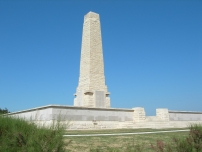| First Name: | Gerald Bevis | Last Name: | LOCKHART | |
|---|---|---|---|---|
| Date of Death: | 10/08/1915 | Lived/Born In: | Belgravia | |
| Rank: | Lieutenant | Unit: | Loyal North Lancashire6 | |
| Memorial Site: | Helles Memorial, Gallipoli | |||
Current Information:Age-21 58, Chester Square, Belgravia
Gallipoli 1915 On 25 April, British, Australian and New Zealand forces landed on the Gallipoli peninsula. The plan was that these forces would soon defeat a demoralised Turkish army, knock Turkey out of the war, open up the Mediterranean to the Russian navy and threaten Austro-Hungary from the south. None of these things were achieved despite nine months of hard fighting in terrible conditions. It was a heroic failure. By July, 1915, and after much fierce fighting, stalemate had set in at Gallipoli both at Cape Helles where the British and French had landed and at Anzac Cove where the Australian and New Zealand Corps were unable to break out of their beach head. Fresh troops were needed and they were on their way in the shape of four divisions from Britain and things were put on hold until they arrived. The plan for August was for a landing at Suvla Bay to the north of Anzac Cove whilst at the same time, the ANZAC Corps, reinforced by some of the new British troops would effect a breakout from Anzac Cove and establish a line across the peninsula. Whilst this was going on the troops in the south at Helles would stage a number of diversionary attacks. But it all went horribly wrong and much of the reason for this can be explained by inadequate planning and leadership. Nobody seemed to know what they were supposed to be doing and Lieutenant-General Stopford, in charge of the Suvla landings was particularly out of his depth. The landings at Suvla failed to link up with the forces at Anzac and the breakout from there did not happen despite valiant efforts by all concerned. The loss of life on all fronts was again enormous. L.A. Carlyon’s excellent book “Gallipoli” gives a superb yet chilling account of the events. The 13th Division, including the 6th Loyal North Lancashire battalion of 38 Brigade, arrived at Helles in July, 1915. 13th Division had been chosen to assist in the breakout from Anzac Cove during the August attack and on 3rd August they moved to this location in preparation. The advance from Anzac Cove began during the night of 6th/7th August but things did not go well. The terrain they had to cross was extremely difficult with deep gullies and steep ridges branching off in all directions and in the confusion of orders and counter-orders units got lost and the cohesion of the attack fell apart Despite this, on 8th August the New Zealand brigade and 8th Welsh and 7th Gloucestershire managed to capture the important heights of Chunuk Bair from where they were relieved overnight by 6th Loyal North Lancashire who did their best to strengthen the defences there in the face of the pounding these positions were receiving from the Turkish artillery. The next day the enemy attacked in force. At daybreak, the forward observation posts hurriedly established overnight were rushed by Turkish bombers and for the next half hour the battalion’s front line was hit by grenades and artillery before being overwhelmed by a mass infantry attack. 6th Loyal North Lancashire sustained over 500 casualties and very few made it back to safety. Among their casualties was Gerald Lockhart who was killed on 10th August. |
||||
| « Back to Search Results | ||||
| If you think any of the information shown here is incorrect, Click Here to submit your amends and comments | ||||




